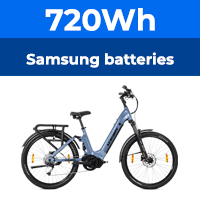I'd like to start a discussion about the lack of common standards of manufacture and interface between the components of e-bikes.
It seems to me, that if there were say a standard connector and wiring configuration (& control voltages etc.) for brake lever cut-outs & throttles, then it would allow a market for upgrades to any bike's standard kit, along with the possibility of options at the original point of sale. This in turn would make it easier, and hopefully more tempting for large, established component manufacturers to produce lines of high quality parts for such aftermarket opportunities. Along with making it easier for owners to set up their bikes to their personal preference, regardless of their technical ability, and make the whole thing less daunting.
It also seems like a good thing for the newly esablished BEBA to get their teeth into.
Thoughts anyone?
It seems to me, that if there were say a standard connector and wiring configuration (& control voltages etc.) for brake lever cut-outs & throttles, then it would allow a market for upgrades to any bike's standard kit, along with the possibility of options at the original point of sale. This in turn would make it easier, and hopefully more tempting for large, established component manufacturers to produce lines of high quality parts for such aftermarket opportunities. Along with making it easier for owners to set up their bikes to their personal preference, regardless of their technical ability, and make the whole thing less daunting.
It also seems like a good thing for the newly esablished BEBA to get their teeth into.
Thoughts anyone?







